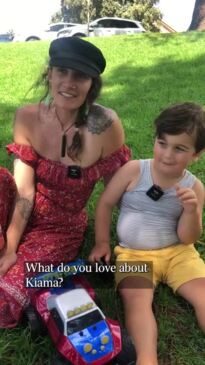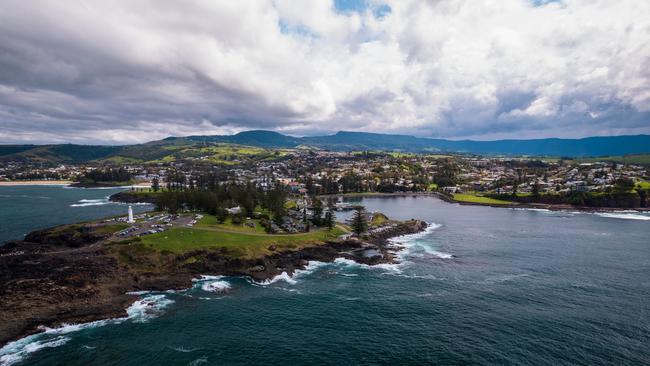Australia’s best towns: Kiama, Margaret River, Shoalhaven among the top places to live
It’s a question that prompts never-ending debate: where is the best place to live in Australia? We’ve crunched the numbers and here’s the number one place in the country, plus the top towns in every state. SEE WHERE YOUR TOWN RANKS

It is an issue that prompts never-ending debate: where is the best place to live in Australia? Some say the big city, others like regional centres, others again prefer small towns.
Banjo Paterson’s Clancy of the Overflow famously didn’t like cities, he much preferred the wide open “sunlit plains extended”. And of course the irony is all these preferences are correct. Most Australians enjoy good quality of life no matter where they live.
But is there a way to determine the best places in which to live? And if so, what are the common denominators between these top spots, between these top towns?
I think there is a way to measure the best towns in Australia and it involves using the 2021 census to filter urban centres and localities using a range of demographic, social and civic criteria.
In this project we’ve identified Tamborine Mountain in Queensland, Mount Barkerin South Australia, Dunsborough in Western Australia, Legana in Tasmania, Nhulunbuy in the Northern Territory, Bright in Victoria and Kiama in NSW the standout overall.
Come with me on a data-driven journey across the Australian continent using the census to find the nation’s top towns.

The towns
The first step is to define the range of towns under consideration.
There are 1809 towns in Australia, according to the most recent census, ranging from a few hundred residents such as the locality of Seventeen Seventy in Queensland (population 125) up to Sydney and Melbourne each with more than five million residents.
In this exercise I am only considering 752 relatively small towns that in aggregate contain four million Australians living in urban centres ranging between 1000 and 50,000 residents.
At the lower end of this range, the 1000-plus towns (which might also service a modest district population) should be capable of supporting a small supermarket or food store, primary school, a few shops, church, petrol station and a range of sporting facilities (perhaps accumulated in earlier times): all the basic accoutrement of (small) town life.
In this model places such as Balgal Beach (60km north of Townsville, with 998 residents) miss out, whereas places such as Cowell (100km south of Whyalla, with 1004 residents) are included.
At the upper end the Top Town Selector model includes Shepparton-Mooroopna with 49,862 residents but excludes Coffs Harbour with 51,069 residents.
Just to be clear: these population estimates relate to census count figures for urban centres and localities, which is different to local council boundaries and different again to significant urban area boundaries. The UCL database is the right tool to conduct this kind of analysis as it compares all towns using a consistent geographic basis.
The metrics
The filtering process screens towns on a range of measures captured by the census that was conducted in August 2021.
I have chosen metrics that I think should be present in any “best town” filtering process. The metrics are based on the averages for four million Australians living in the (752) subject towns at the time of the census.
The Top Town Selector model screens all towns on the basis of:
• More than $1282 a week household median income.
• Less than 5.1 per cent unemployment.
• More than 15 per cent attained university education.
• More than 36 per cent with technical (trade) skill.
• More than 12 per cent workforce owner/manager.
• No less than 14 per cent born overseas.
• At least 17 per cent volunteer.
• At least 14 per cent provide unpaid care, for example to a relative.
• More than 59 per cent have no long-term health condition.
• More than 6.5 hours a week in unpaid domestic housework.

Plus, I have added the proviso that growing towns (compared with 2016 population levels) provide locals with business opportunity and rising demand for residential property. In other words, there is price tension in the housing market.
This collection of metrics mathematically selects towns that are prosperous (income, unemployment), skilled (education and training), entrepreneurial (owner/manager), diverse (overseas born), civic minded (volunteer), caring (unpaid care), deliver wellness (long-term health conditions) and are co-operative (domestic housework). To deliver an above-average number of hours allocated to domestic housework generally requires householders (males and females) to work together to maintain a house both inside and outside.
The results
There are only 13 towns (within the selected range of 752 towns) that make it through all filters, in addition to the growth requisite, and Kiama is the standout.
Kiama has critical mass (population 14,761); it exceeds the group average in income, skills, entrepreneurship, wellness and in domestic housework. Plus, its population increased by 9 per cent across the five years to 2021. Clearly, it’s a case of Can-do Kiama, or maybe this top town should be celebrated via the phrase Kiama-dabba-doo.

Each state and territory’s best-in-class town is drawn from a list of 36 finalists that survive most of the filters. Models such as the Top Towns Selector can be blunt instruments but they do serve a purpose; they methodically canvass communities using clinically objective metrics.
The need for towns to have no less than 14 per cent overseas born particularly affected Victoria. Towns such as Ocean Grove-Barwon Heads would have made the cut had this metric been reduced to 12 per cent. Other Victorian towns that just missed the finalists’ cut include Batesford, Gembrook and Koroit. In Tasmania, the delightfully named township of Snug comes second to the state winner Legana.
The model as constructed doesn’t identify any (finalist) towns in the wheatbelt, across the grazing lands or within what might be called the more closely settled farmlands of Australia.
From my own experience such towns offer a wonderful quality of life; there’s an energy and often a generational commitment to such places; yet they consistently fail to make the grade using this selection of metrics.
However in the modern era, say the 2020s and beyond, I think that small-town Australia (as well as big-city Australia) needs skills, training, entrepreneurial energy and a measure of diversity to deliver opportunity to residents.
Immigrants inject energy and aspiration into a community; their stories inspire; they fill the jobs that ultimately lead to social mobility; and more often than not they learn how to play football and netball. There are many wonderful examples of the migrant contribution to non-metropolitan communities across Australia.
Yet for some reason this overseas-born cohort is less likely to spill outwards from Melbourne than are their counterparts in other mainland capitals. Maybe Melbourne’s immigrant community is disproportionately prepared to remain within the capital. In other cities this group downshifts out of the city to nearby lifestyle zones.
But in either case I’m not sure that this issue really matters.
The lifestyle communities identified, and many towns that sit just beyond the finalists list, have all the hallmarks of top towns. To varying degrees all these communities are prosperous, skilled, caring and civic minded.
In some respects these data-filtering models, or dashboards as they are known in the demographics world, are just the starting point to better understanding who we are as a nation. They throw up obvious winners such as Kiama and they identify emerging places that prescriptively fit the profile of a top town.
If the Top Towns Selector is applied to the 1027 tiny towns with fewer than 1000 residents the model identifies Surf Beach-Sunderland Bay (population 981) on Victoria’s Phillip Island, Kureelpa (population 968) near Nambour in Queensland, and Howden (population 717) south of Hobart.
Many of the 36 finalist towns cluster within the same municipality. For example there are three – Palmwoods, Kiels Mountain, Eumundi – in the Sunshine Coast Regional Council. There are two finalist towns in the municipalities of Shoalhaven, Wingecarribee, Ballina, Kiama, Onkaparinga and Augusta-Margaret River.
It does raise the question: “Mr/Ms Mayor, why are the towns in your municipality so highly regarded by the Australian people?”
What Australians value
What this exercise shows is that across the continent Australians want more or less the same thing when it comes to living in a small town: proximity to a capital or major regional city; a tree-change or a sea-change environment; or, better still, all three criteria jammed within a single location offering views and amenity.
That amenity can be the coast but it can also be access to the ski fields, to vineyards, to rural lifestyle living.
A series of small-town lifestyle zones are emerging within striking distance of Perth (around Dunsborough), around Adelaide (the Adelaide Hills environs), north of Brisbane (Sunshine Coast hinterland) and most famously, along the NSW south coast.
The Australian people have spoken through their collective responses to the census. Sea-change, tree-change, big-city access and a place of their own within which they can potter about and steadily make improvements, while also volunteering, caring, and making a contribution to the local community. That is the essence of small-town Australia.
DATA DEEP DIVE: Click here to search the full data set (best for tablet and desktop)
And of course if you disagree with the metrics and the logic of how the top towns were selected then you are free to jump on to the website, access the model, switch around the metrics and come up with your own version of Australia’s top towns. Hours of fun for the demographically inclined.
Bernard Salt is founder of The Demographics Group.
Data and model by data scientist Hari Hara Priya Kannan.








To join the conversation, please log in. Don't have an account? Register
Join the conversation, you are commenting as Logout